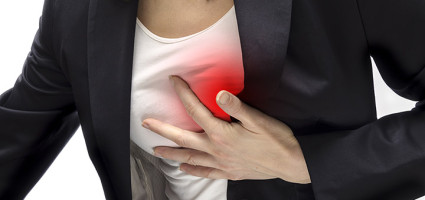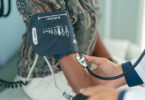 QUESTION: A friend recently had a heart attack. His main symptoms were vomiting and being extremely sweaty. I thought a heart attack produced really severe chest pain. How are you supposed to know if you’re having a heart attack?
QUESTION: A friend recently had a heart attack. His main symptoms were vomiting and being extremely sweaty. I thought a heart attack produced really severe chest pain. How are you supposed to know if you’re having a heart attack?
ANSWER: The most common sign of a heart attack is, indeed, chest pain. But not everyone feels the same thing. Like your friend, some people have other symptoms. And unfortunately, they may not realize they are having a heart attack and delay seeking potentially life-saving medical treatment.
The challenge of recognizing a real heart attack arises from the fact that the heart doesn’t have the same level of pain sensors found in some other parts of the body such as the surface of skin, says Dr. Harindra Wijeysundera, an interventional cardiologist at Sunnybrook Health Sciences Centre.
“A lot of patients think of pain as being sharp – a stabbing-like discomfort they get when they cut themselves,” he explains.
Heart attack pain can be different. It may feel like a pressure or tightness and general discomfort. It’s sometimes described as an “elephant standing on your chest.” The discomfort can radiate up to the neck and jaw or down the left arm. These are the typical symptoms of a heart attack and they usually include shortness of breath.
Others may experience non-typical symptoms such as stomach upset or a feeling resembling heartburn. They may actually vomit and be extremely sweaty even though they are not hot. They can also feel lightheaded.
And, in some cases, the person notices only one symptom, while others feel an array of them.
To further muddy the waters, the pain or discomfort may not seem extremely bad. Many people think a heart attack will produce “severe, overwhelming, stop-you-in-your-tracks chest pain,” notes Dr. Wijeysundera. That isn’t always the case.
Not so long ago, it was thought that women were less likely than men to experience the crushing chest pain associated with a heart attack. That assumption was used to explain why women tended to be treated less aggressively than men when they showed up at a hospital emergency department with a heart attack.
“But, to be honest, I think there is so much individual variability that I am not sure the gender differences stand up,” says Dr. Stephanie Poon, a staff cardiologist at Sunnybrook. “Women can certainly feel heart attacks the same way as men.” It’s just impossible to predict how any particular person is going to feel when a heart attack happens.
A heart attack results from a blockage in the coronary arteries that supply blood and oxygen to the heart muscle. These obstructions usually develop over a period of time as plaque and fatty deposits build up inside the walls of the arteries. If left unchecked, an artery may become completely blocked. In some cases, the plaque ruptures or tears, causing the formation of a clot that immediately stops or hinders blood flowing to a part of the heart, thereby damaging the vital organ.
“For a lot of people, it is very much a progression and there are a lot of warning signs before they actually have a heart attack,” says Dr. Poon.
“As the blockages get bigger and bigger, the supply of blood and oxygen to the heart muscle is decreasing as well,” she explains. That means the individual may no longer be able to do daily activities – such as walking up a flight of stairs – without feeling winded or having some chest tightness.
“If you feel you’re slowing down because you’re always out of breath or getting chest tightness, you should go see your family physician,” advises Dr. Poon. “Hopefully, the doctor can begin preventive measures that nip the problem in the bud.”
But sometime people ignore the warning signs, or the preventive measures are not enough to stop the inevitable and a heart attack still happens.
“If you are feeling really unwell, having chest tightness, shortness of breath, feel sweaty or very nauseated and it goes on for 15 or 20 minutes, or gets worse, then you should call 911 for EMS (Emergency Medical Services) to take you to the hospital,” says Dr. Poon.
Don’t try to drive yourself. “You can pass out at the wheel and have an accident,” she warns.
Furthermore, EMS can speed your way to rapid treatment. When the paramedics arrive, they will put electrodes on your chest to do an electrocardiogram, which measures the heart’s electrical activity. This test can often determine if a patient is having a heart attack. In some cases, patients are rushed into a hospital’s cardiac cath-lab, bypassing the emergency department “and saving valuable time,” says Dr. Wijeysundera, who is also an Assistant Professor at the University of Toronto.
The cardiac cath-lab is where doctors do angioplasty – a procedure that can open up blocked coronary arteries.
A catheter, or thin plastic tube, is inserted in an arm or leg artery and pushed along to the heart blockage. A balloon-like device at the end of the catheter is inflated to press the obstruction aside. A stent, or tiny wire mesh, is then put in place to keep the artery propped open.
By rapidly restoring blood flow, damage to the heart can be limited.
“I often tell my patients to seek medical attention even if they are unsure they are having a heart attack,” says Dr. Wijeysundera. “It’s better to err on the side of caution because a heart attack is such a serious condition and unfortunately our warning symptoms are not always that great.”







